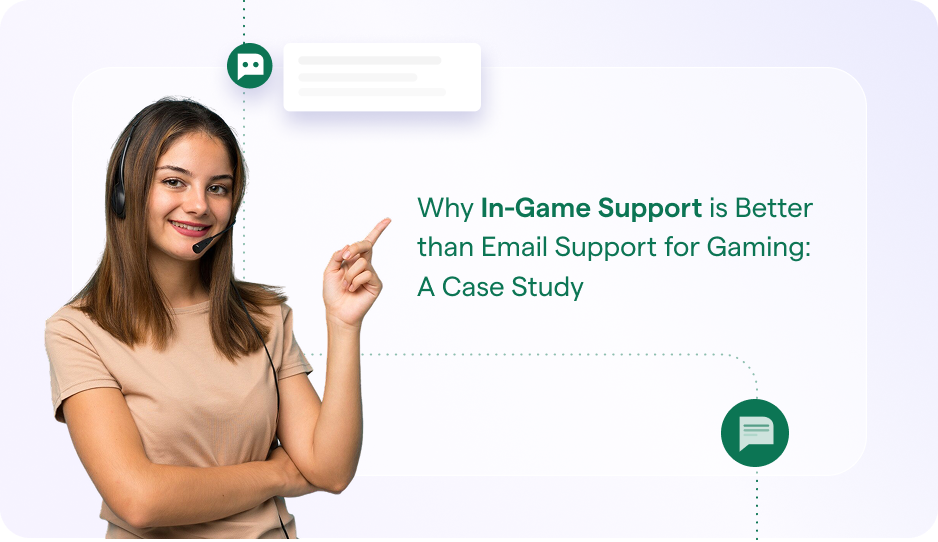For scaling companies, customer retention is an incredibly important metric. A business can’t grow if it’s bleeding customers. Economically speaking, investing in retention is also more cost-effective than acquisition.
How can retention be measured? With something called the retention rate. In simple terms, a customer retention rate is a measurement of how many customers a company keeps over a given period. It is worked out with a formula and denoted as a percentage.
On closer inspection, however, retention rates are more complicated than this. The picture can be clouded when new customers are added to the equation – consequently, businesses can lose focus and overlook serious retention issues if the acquisition rate remains high enough to balance the numbers on paper. Retention rates are thus a valuable tool for understanding customer lifetime value as well as gauging how effective customer service efforts are.
How is Customer Retention Rate Calculated?
When it comes down to it, the retention rate is a mathematical formula worked out by reviewing the number of customers lost and gained over time.
To work out the retention rate, a business first needs to define this time period. This will change from business to business and industry to industry. Retention can be calculated yearly, monthly, weekly or even daily depending on specific requirements.
Once this is known, the next step is to find out the following:
- Number of customers at the start of the period (S)
- Number of customers at the end of the period (E)
- Number of new customers acquired during the period (N)
Retention Rate Formula
The retention rate formula is easy to use once the relevant factors have been worked out.
It is important to disregard the new customers that have joined during the period in question, however, as this can artificially inflate the numbers. As such, the number of new customers (N) should be subtracted from the end of period total (E).
After this, it is simply a case of subtracting the number of customers from back at the start of the period (S) and multiplying by 100 to find the percentage figure.
The retention rate formula should ultimately be expressed as follows:
Customer retention rate (CRR) = [(E-N)]/Sx100
A ‘good’ retention rate is a number as close to 100% as possible. However, depending on the strategy in play, it’s sometimes more viable for a business to choose to lose out on retention in favour of gaining new, higher-value customers.
What is the Difference Between Retention Rate and Churn?
Retention rates and customer churn are essentially two sides of the same coin. Though related, they measure two different events.
Churn rate is the percentage of customers lost (through cancellation or unsubscription) over a certain time period. In much the same way as retention rate, churn rate can be worked out with a formula. In this case:
(The number of lost customers/ total number of customers) x 100
Important Retention Rate Metrics
When it comes to understanding, and improving, retention rates, churn can only tell you so much. Knowing how many customers have left is valuable data, but making sure it doesn’t happen again relies on knowing why they left in the first place. To gain a fuller picture, it’s important to look at some additional metrics.
Lifetime value
Customer lifetime value (CLV) represents how much profit can be attributed to a company’s entire future relationship with a customer. Used within many sectors, though particularly marketing, CLV essentially assigns a monetary value to a customer. With this figure, it’s possible to segment customers based on who are most worth retaining. This, in turn, helps with setting spending limits and benchmarks for acquisition and retention costs.
CLV can be worked out in a few different ways. The most simple formula is:
(Average order value x Repeat purchase rate) – Customer acquisition cost
For retention, CLV is an important metric to bear in mind. It highlights when money is best spent on boosting the retention rate or invested in acquisition.
Net Promoter Score (NPS)
Net Promoter Score (NPS) is essentially a measurement of how likely a customer is to recommend a product or service. Although originally conceived as a score, it has evolved into an entire system used to improve customer-centric initiatives.
NPS is calculated through the use of feedback surveys where customers are asked to rate how likely they are to recommend a business to their friends and family. In this way, it acts as a yardstick for measuring customer satisfaction and is a particularly useful way to spot churn before it happens.
Revenue Churn
As well as customer churn, companies should look towards revenue churn when understanding their retention rates. Revenue churn, as the name suggests, shows how much monthly recurring revenue (MRR) is lost over a specific period of time:
(MRR lost within the time period / MRR at the beginning of the time period) x 100
It is a way of viewing how churn impacts the bottom line and helps to put the metric into context.
Repeat purchase rate
This is a metric that is best applied to businesses without a subscription model, such as ecommerce retailers. It measures the proportion of customers who return to do business with a company after the first initial purchase. When looking at retention rates, repeat customers is thus an incredibly useful metric to understand.
How Helpshift Improves Customer Retention Rates
The most important step in improving retention rates is to reduce churn, and reducing churn comes down to keeping customers happy and satisfied. This is why customer service is so vital.
Customers who don’t feel valued anymore are unlikely to stick with a brand, no matter how old the relationship is. Integrating effective customer service into every step of the customer journey is the best way to combat this. From acquisition to onboarding, to retention, customer support should be embedded at every point. To do so effectively, companies need to leverage the right technology.
Helpshift provides the tools that customer service teams need to maximize their impact. To prevent churn, customers should be made to feel valued instead of being kept waiting or ushered from department to department after asking a relatively simple question. Helpshift ensures faster response times and frictionless service while maintaining a high level of personalization. When a customer conversation starts, bots collect issue information to determine whether an issue-specific bot should be introduced or whether the issue should be escalated to a human agent. In the same way, customers can be automatically directed to a knowledge base with resources to help them self-serve.
Using automated chatbots, conversational help is available 24/7, even when agents are asleep. This way, more minor queries can be dealt with fast and effectively and human agents have more time to focus on high-value tasks. Ultimately, by leveraging the right tools and automation, customers can be made to feel supported at every stage of their lifecycle which facilitates longer-lasting relationships.
Additional Retention Rate Resources
Products: Chat and Conversational Help
Products: Help Bots and Automation
Products: Self Service Experience



